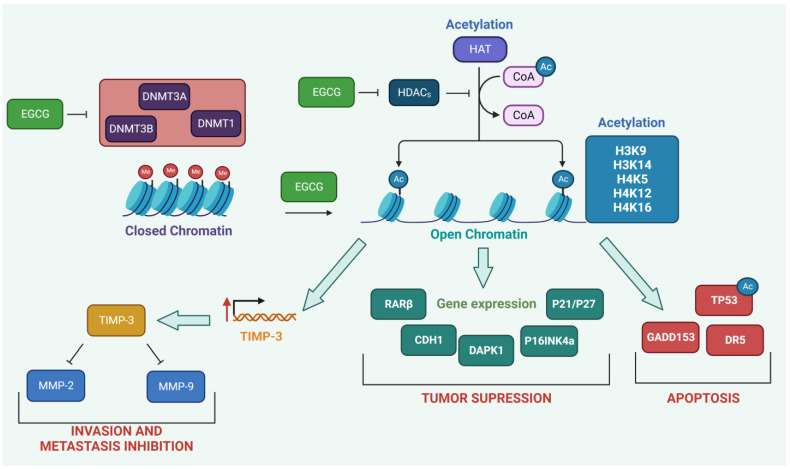Figure 3.
The modulation of epigenetic targets by epigallocatechin-3-gallate (EGCG). Methylation of CpG islands and histone proteins works as a mark that confers the closed chromatin formation and transcriptional suppression of genes encoding proteins involved in tumor suppression, invasion and metastasis inhibition, and apoptosis induction. EGCG down-regulates and inhibits the activity of DNA methyltransferases (DNMT1, DNMT3A, and 3B) that introduce methyl groups to DNA. Moreover, EGCG was shown to inhibit the activity of histone deacetylases (HDACs) that counteract the introduction of acetyl groups to histone proteins via histone acetyltransferases (HATs). The introduction of acetyl groups to histone proteins (H3K9, H3K14, H4K5, H4K12, and H4K16) contributes to the open chromatin state and elevated expression of tumor suppressor proteins (CDH1, DAPK1, P12, P16INK4a, P27, and RARβ), proteins involved in apoptosis induction and cell death control (DR5, GAD153, and TP53), and TIMP-3, which inhibits the proteolytic activity of MMP-2 and MMP-9. For full protein names, see the abbreviations section. Created with BioRender.com, accessed on 29 March 2023.

